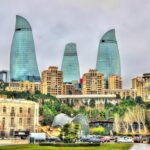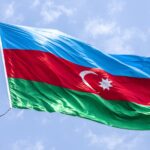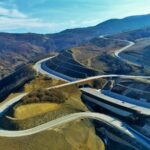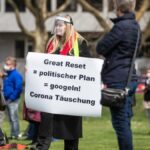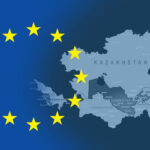Introduction
To integrate a region into global trade effectively, it is crucial to consider factors such as the availability of natural resources, modern infrastructure, a harmonized legal and regulatory framework, active financial movements, relatively low tariff barriers, and even the implementation of certain tariff-free regimes. Additionally, the absence of war, the establishment of peace, the lack of sanctions, and a low level of political risk are essential.
Azerbaijan occupies a strategic position along the global East-West and North-South corridors. The intensification of conflicts and wars worldwide, along with disruptions to global transport and logistics routes, underscores the importance of Azerbaijan’s role as a vital link in global trade.
Since the launch of the Baku-Tbilisi-Kars railway in 2017 and the activation of the Trans-Caspian transport corridor, Azerbaijan has been providing transport and logistics services along the East-West corridor. However, to enhance its role in global transitions, it needed to address some missing links: the Astara (Azerbaijan) – Rasht (Iran) railway segment in the North-South corridor and a new crossing in the East-West corridor – the Zangezur corridor.
Following the second Karabakh war in 2020 (the 44-day war), Azerbaijan began to open new opportunities for global trade through its territory by resolving all geostrategic issues. In December 2023, an agreement was signed to construct a railway between Astara (Azerbaijan) and Rasht (Iran). Additionally, as part of the process of normalizing relations between Armenia and Azerbaijan from 2020 to 2023, infrastructure construction began to open the Zangezur corridor in both Armenia and Azerbaijan. The completion of these projects will significantly enhance Azerbaijan’s role as a global transit hub. As US President Joe Biden noted in his letter addressed during “Baku Energy Week” (June 4, 2024), “Regional stability and interconnectivity are priorities for the United States. A durable and dignified peace agreement that ends decades of conflict would transform the South Caucasus and fundamentally change Azerbaijan’s role in the region. The United States stands ready to support this noble ambition. We owe it to future generations to ensure peace and prosperity remain our guiding principles.“
The ongoing normalization process between Armenia and Azerbaijan, which has ensured regional peace and security, along with the absence of political risks and sanction threats, strengthens Azerbaijan’s position. This also contributes to increased economic activity and the attractiveness of the economic zones of Karabakh and East Zangezur (hereinafter referred to as Karabakh) for global corridors. In this context, Karabakh is becoming an increasingly attractive economic zone for foreign investments.
This text examines the natural resources and economic attractiveness of Karabakh, the economic damage inflicted on Azerbaijan due to the occupation of these lands, the plundering of Karabakh’s economic resources by Armenians, plans for the rehabilitation of Karabakh, a brief overview of post-conflict reconstruction efforts in Karabakh, opportunities for foreign companies to participate in Karabakh’s reconstruction, and recommendations for attracting Swiss companies to the reconstruction efforts.
Natural Resources and Economic Attractiveness of Karabakh
Karabakh holds significant cultural and spiritual value for the Azerbaijani people and historical-political importance for the Azerbaijani state. Additionally, the region has always attracted attention for its economic potential, appealing to both local and foreign investors.
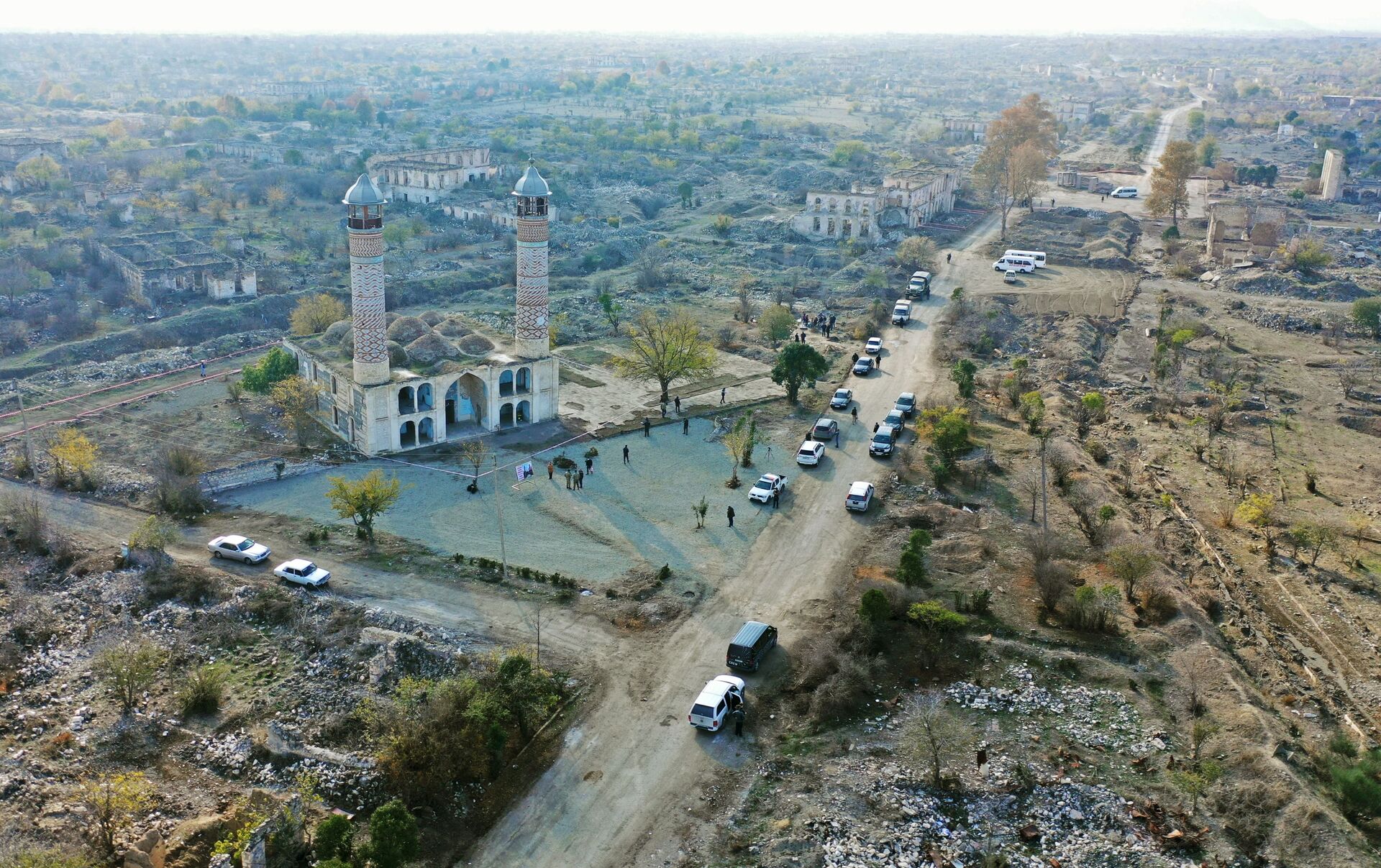
The Nagorno-Karabakh Autonomous Oblast, established by the USSR and existing from 1923 to 1991, outperformed not only other districts of the Azerbaijan SSR but also the Armenian SSR in economic indicators. This was due to the region’s natural resources, fertile land, developed infrastructure, and substantial investments. For example, despite occupying only 5.1% of the Azerbaijan SSR’s territory, Nagorno-Karabakh contributed 6% of the country’s total agricultural production in the 1970s. In 1981, the annual GDP growth rate of the Azerbaijan SSR was 7%, while in Nagorno-Karabakh, it reached 8.3%.
The primary agricultural sectors in Karabakh (formerly Nagorno-Karabakh) included viticulture (and related winemaking), sericulture, and cotton farming. The region also had developed industrial sectors such as electronics, machinery, textiles, and the production of wood products and furniture. According to statistical data, there were 15 industrial enterprises operating in the region. Nagorno-Karabakh accounted for 5.7% of the republic’s total electrical and technical production.
In addition to Nagorno-Karabakh, seven adjacent districts, occupied by Armenia, also held significant economic value. Before the occupation, these districts played an important role in the regional economy with the following types of economic activities:
In the Aghdam District, the main economic activities were winemaking, grain farming, livestock breeding, and sericulture. The district had enterprises for meat processing, dairy production, canned goods, and wine production. There was also a stone quarry and several other enterprises.
In the Fuzuli District, the population was engaged in winemaking, grain farming, livestock breeding, and sericulture. The district had enterprises for cotton production, dairy products, canned goods, and wine, as well as a stone quarry, a textile factory, and several other enterprises.
In the Jabrayil District, the main economic activities were winemaking, tobacco cultivation, grain farming, and livestock breeding. The district had carpet workshops, a winery, a bread factory, an agricultural machinery repair enterprise, and several other enterprises.
In the Zangilan District, the population was engaged in winemaking, tobacco cultivation, and grain farming. The district had high tourism potential.
In the Gubadly District, the main economic activities were winemaking, tobacco cultivation, grain farming, livestock breeding, and sericulture. The district had 31 dairy production plants, 27 mechanized enterprises, including an asphalt mixing plant, a livestock farm, a stone quarry, and a marble workshop.
In the Lachin District, the population was engaged in livestock breeding and grain farming. The district had enterprises for dairy and bread production, a stone quarry, asphalt concrete plants, textile workshops, natural marble processing enterprises, aluminum and machinery plants, and several other enterprises.
In the Kalbajar District, the main economic activities were livestock breeding and tobacco cultivation. The district had enterprises for mineral water and lumber production. Tourism services also had economic significance.
The wealth of natural resources in Karabakh is substantial, with 163 deposits of valuable minerals (both metallic and non-metallic) discovered. These include 5 gold deposits, 2 copper, 7 mercury, 1 lead-zinc, 1 coal, 6 gypsum, 4 vermiculite, 1 soda raw material, 12 colored and decorative stones, 10 sawn stones, 21 facing stones, 9 clay, 20 cement raw materials, 8 different types of construction stones, 6 lime raw materials, 10 sand-gravel, 4 construction sand, 1 perlite, 8 pumice-volcanic, 16 underground fresh water, and 11 mineral water deposits. The construction of power plants and railways in this area further enhanced its role as an economic center, including the former Nagorno-Karabakh Autonomous Oblast (NKAO) and the seven adjacent districts.
In Karabakh and East Zangezur, that is, in the territory of the former NKAO and the seven adjacent districts, the richest deposits are:
| Gold-Copper-Pyrite Deposits | Gizilbulag (Kalbajar District) |
| Gold Deposits | Zod-Soyudlu, Aghdüzdag, Tutkhum (Kalbajar District), Vejnali (Zangilan District). The village of Zar in the Kalbajar District was historically known as “Shahrizar,” meaning “city of gold.” The Aghdüzdag deposit is also located in the upper reaches of the Zar River. |
| Copper-Gold and Molybdenum Deposits | Demirli, Janyatag, Gyulyatag (occupied part of Terter District, former Aghdara District) |
| Lead Ore Deposit | Mehmanah (Aghdara), Shorbulag (Kalbajar District) |
| Mercury Deposits | Sarybulag, Aghyatag, Levchay, Shorbulag, Gamishli, Aghkaya (Kalbajar and Lachin Districts), Chilgachchay, Narzanly (Lachin District) |
| Limestone Deposit | Shahbulag, marl deposit in Askeran |
| Marbleized Limestone Deposits | Aghchay, Kharov, Zarinbakh, Yemishjan, and Gyulably |
| Tuff Deposits | Chyldyiran |
| Gypsum Deposits | Chilyaburt, among other minerals |
According to the head of the National Geological Exploration Service of the Ministry of Ecology and Natural Resources of the Republic of Azerbaijan, Ali Aliyev (2021), there are 34 mineral deposits in Kalbajar included in the balance of the reserves commission, 40 in Lachin, 11 in Zangilan, 11 in Gubadly, 26 in Jabrayil, 6 in Fuzuli, and 15 in Aghdam.
Significant Economic Damage to Azerbaijan Due to the Occupation of Karabakh
The Karabakh war, which began in 1988, continued until 1994 and resulted in the occupation of the Nagorno-Karabakh Autonomous Oblast (NKAO) and seven adjacent districts (Lachin, Kalbajar, Aghdam, Fuzuli, Jabrayil, Gubadly, Zangilan) by Armenia. Initially, it was estimated that Azerbaijan lost 16% of its economic potential due to the occupation, with the destruction causing damage of approximately 60 billion USD. According to UN estimates, this figure stands at 53.5 billion USD. Data from the Ministry of Ecology and Natural Resources of the Republic of Azerbaijan indicates that the looting of natural resources and economic assets resulted in a total loss of 265 billion USD for Azerbaijan. According to the forensic examination conducted by the Military Prosecutor’s Office, the total material damage across all sectors amounts to 819 billion USD.
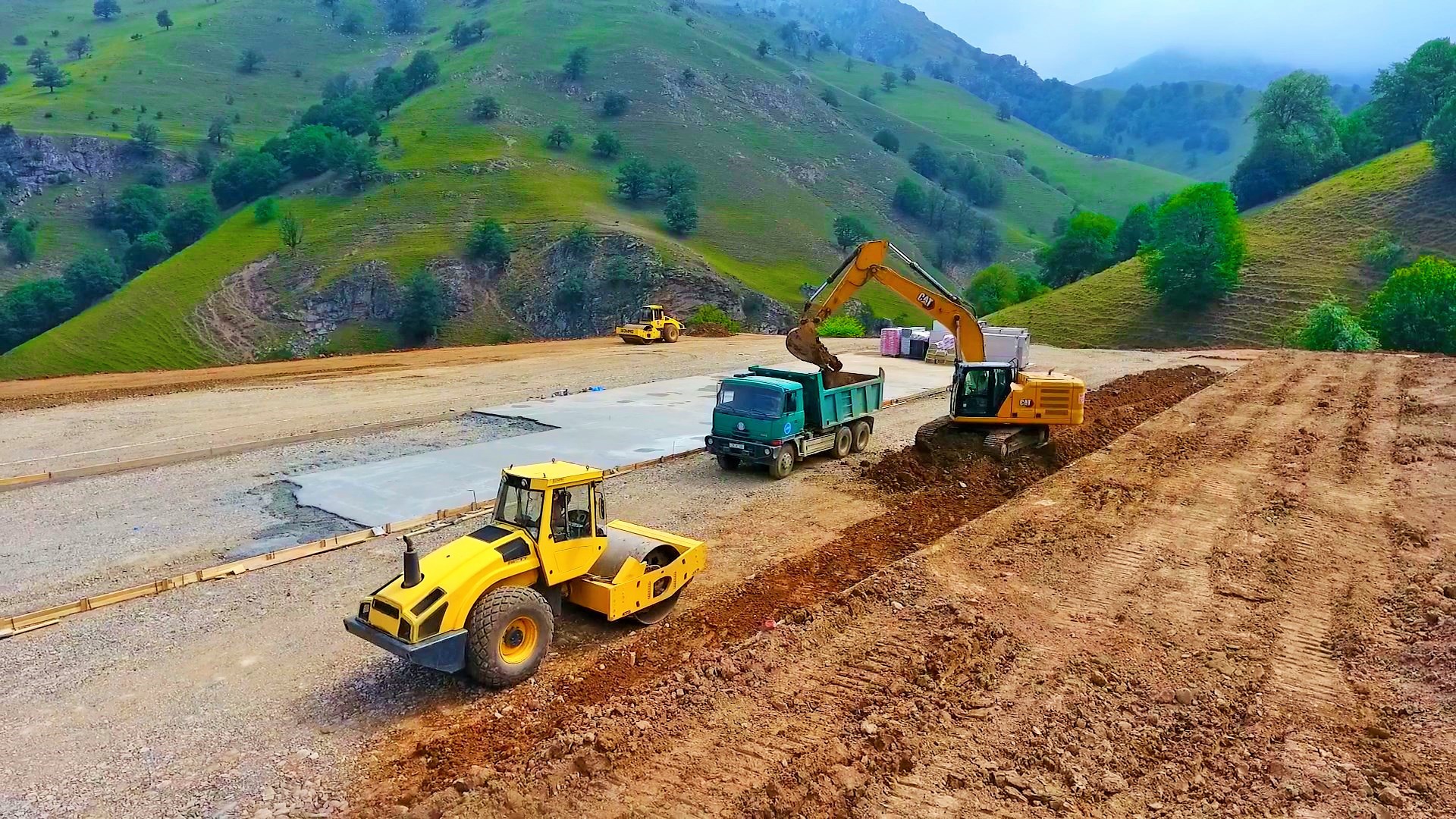
On the territories occupied by Armenia, 917 settlements were destroyed, along with about 131,000 individual houses, 2,389 industrial and agricultural facilities, 1,025 schools, and 798 medical institutions. Direct victims of the aggression included 280 hectares of forest land, 1 million hectares of fertile land, and 1,200 km of irrigation systems, which fell into the hands of the occupiers. As a result of the occupation, not only did 20% of Azerbaijan’s territory suffer, but the economic opportunities for settlements near the occupied territories were also lost. Consequently, a total of 1,765 settlements suffered direct and indirect damage from the war.
Following the liberation of our lands from occupation during the second Karabakh war, the “First State Program Plan for the Great Return” was adopted on November 16, 2022, initiating extensive efforts to restore the settlements. The creation of modern infrastructure in Karabakh is a crucial strategic direction for Azerbaijan.
Economic Resources of Karabakh Plundered During the Occupation
In the territory of the former Nagorno-Karabakh Autonomous Oblast (NKAO) and the seven adjacent districts, where the unrecognized puppet “Nagorno-Karabakh Republic” was illegally established, economic resources were plundered by Armenia during nearly 30 years of occupation.
The report “Illegal Economic and Other Activities in the Occupied Territories of Azerbaijan,” prepared by the Ministry of Foreign Affairs of the Republic of Azerbaijan in 2016, provides a detailed description of the exploitation of Azerbaijan’s natural resources.
According to the report, products manufactured in this region by companies such as “Stepanakert Brandy Factory” and “Artsakh Fruit CJSC” were primarily exported under the “Made in Armenia” brand. Fertile lands in the Zangilan and Jabrayil districts were used for agriculture. The Kalbajar, Lachin, Zangilan, and Jabrayil districts, rich in water resources, were actively utilized by the Armenian company ArmWaterProject. These water resources were used not only for irrigation but also for the construction of hydroelectric power plants.
Rich deposits of minerals and metals were also exploited. The Gizilbulag gold-copper deposit near the village of Heyvali in the Kalbajar district was operated by “Base Metals CJSC,” a subsidiary of the Armenian company Vallex Group, registered in Liechtenstein. In 2013, “Base Metals” began exploiting gold-copper deposits near the villages of Demirli, Gyulyatag, and Janyatag in the occupied territories of Terter (formerly the Aghdara district, abolished in 1991). In 2014, “Gold Star,” a subsidiary of “Base Metals,” started exploiting the Vejnali gold deposit in the Zangilan district. Since 2007, “GPM Gold,” a subsidiary of the Russian GeoProMining, had been exploiting the Zod-Soyudlu gold deposit in the Kalbajar district.
In the occupied part of the Terter district (formerly Aghdara district), coal deposits were developed in the village of Chardagly. The coal extracted here was used to power the thermal power plant in Yerevan. The ore extracted from the gold mines was also transported to Armenia, where it was processed into gold-bearing copper and then exported to the international market.
The development of gold-copper mines such as “Gizilbulag,” “Demirli,” “Vejnali,” and others was accompanied by environmental terror: toxic waste dumped into the Terter River poisoned the land and water. The owner of the gold mining company “Base Metal,” which exploited these deposits and was part of Vallex Group Holding, is Vardan Sirmakes. Since 2011, he has been the Honorary Consul of Armenia in Marseille, France. He is also the CEO of the Swiss watch company “Franck Muller,” owner of ArmSwissBank, and holds 66.3% of the shares of Artsakhbank. In Karabakh, he owned several infrastructure projects, including fish farms in Sugovushan, and was placed on an international wanted list by Interpol for illegal activities in the occupied territories of Azerbaijan.
Unfortunately, economic entities from several other countries, including Russian, American, and European companies (France, Bulgaria, Ukraine, Hungary, Belgium, Germany, Czech Republic, Netherlands, etc.), as well as Australia and the UAE, also participated in these illegal activities.
Azerbaijan is considering filing lawsuits in the courts of countries where these companies (including Swiss companies) are based for their illegal activities aimed at plundering Karabakh’s wealth.
Additionally, companies participating in the reconstruction and restoration of Karabakh receive significant economic benefits and dividends. According to clause 5.2.4 of the “First State Program Plan for the Great Return,” simplified economic models are applied to accelerate the economic development of the territories, including incentives and benefits to attract domestic and foreign investors, as well as expanded access to banking, insurance, and financial services. Based on this program, the State Tax Service under the Ministry of Economy announced a 10-year tax exemption starting from January 1, 2023. These benefits apply to residents of the liberated territories, including foreign companies and their shareholders.
Thus, dividend incomes of shareholders and partners of legal entities that are residents of the liberated territories are exempt from taxes for 10 years. Additionally, several tax incentives are implemented to increase economic activity in the region. For example, in the tourism sector, alongside general benefits, VAT refunds are provided to consumers for hotel services (30% for cashless payments and 5% for cash payments), which will boost tourist flow and ensure consistent profitability for companies operating in the hotel sector. All sectors of the real economy in the liberated territories, including trade, services, manufacturing, construction, extractive industries, and other sub-sectors, will benefit from tax incentives.
Furthermore, the Presidential Decree of the Republic of Azerbaijan dated December 10, 2021, “On Some Measures to Accelerate Economic Development in the Liberated Territories,” provides for the application of tax, social, and other benefits, the stimulation of private initiatives in Karabakh, the establishment of customs and tax exemptions on the import of raw materials and materials for entrepreneurs engaged in production activities, the provision of utility benefits (electricity, natural gas, and water supply) for entrepreneurs engaged in production activities, support for investors applying “green” and environmentally friendly technologies, and the development of public-private partnerships in residential construction.
Plans for the Rehabilitation of Karabakh
Despite the occupation of Karabakh and the plundering of its natural resources, Azerbaijan always believed that it would eventually liberate its lands. To achieve this goal, it consistently followed a military-political, economic, and ideological course. This belief is evidenced by the study “Basic Principles for the Rehabilitation of Azerbaijan’s Post-Conflict Territories,” published in 2010, ten years before the liberation of Karabakh, authored by Nazim Muzefferli-Imanov and Eldar Ismailov.
The authors assert that approximately 85-90% of internally displaced persons (IDPs) from the occupied territories of Azerbaijan will return, amounting to around 450-520 thousand citizens. Providing housing for this population, along with carrying out extensive rehabilitation and construction work, will require large-scale projects.
The authors emphasize the restoration of traditional agricultural sectors in Karabakh (viticulture, grain farming, cotton farming, livestock breeding, horse breeding) and associated processing and manufacturing industries, as well as modern tourism and health tourism sectors, as being highly attractive and investment-worthy. They suggest that establishing industries in Karabakh such as carpet weaving, leather production, construction materials manufacturing, dairy and meat processing, winemaking, and the construction of tourism facilities will be economically profitable and ensure sustainable income.
They even predicted that as part of the peace process between Azerbaijan and Armenia, movement between the two countries would be restored, border checkpoints would be expanded, and new logistical routes would be created. They also foresaw the construction of the Azerbaijan-Armenia-Nakhchivan road (the Zangezur Corridor, which is currently under construction). These predictions have begun to materialize following the liberation of Karabakh from occupation. Investing in such promising projects as integration into the global East-West corridor can be advantageous for foreign companies.
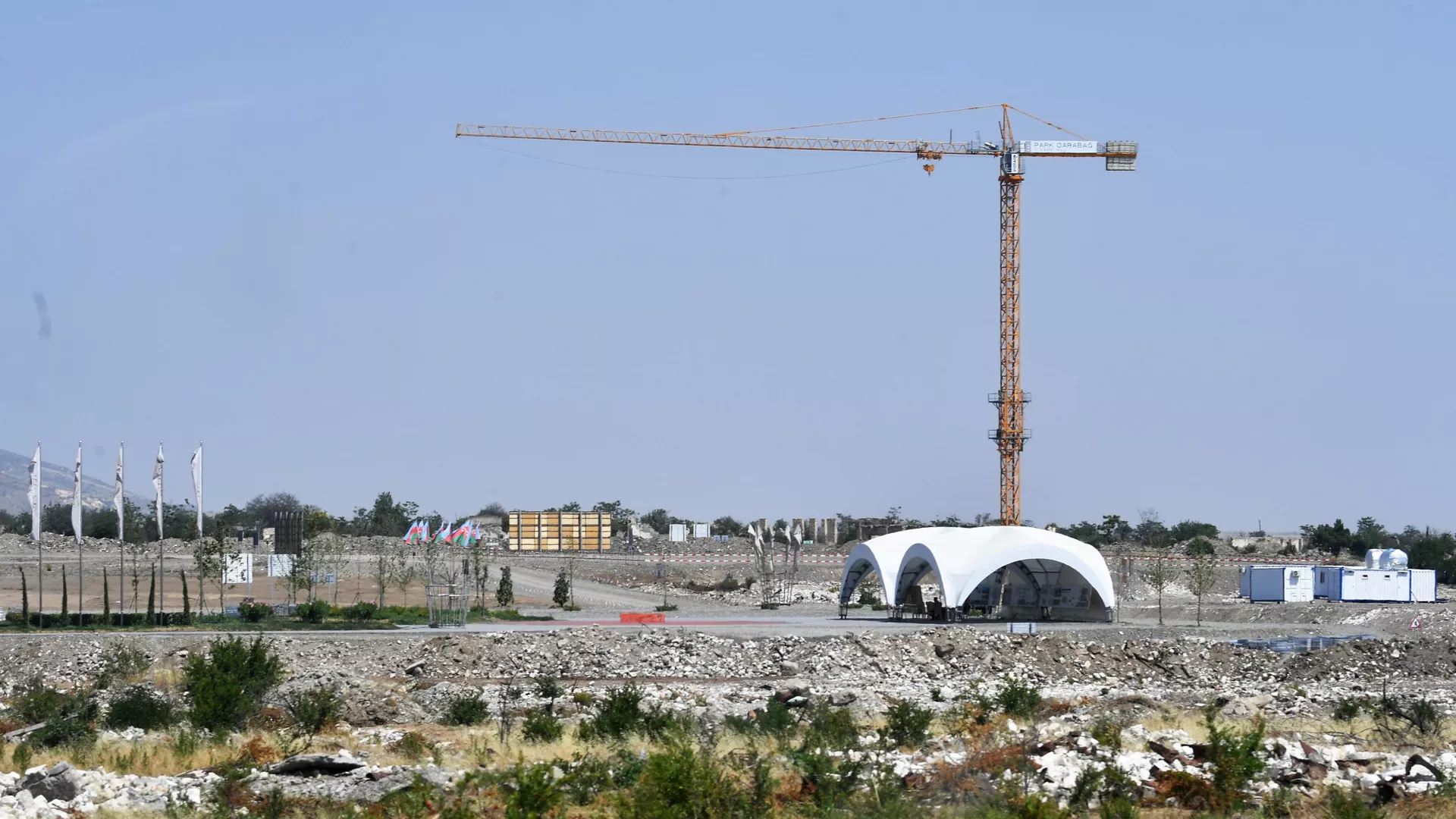
As mentioned earlier, following the victory in the 44-day Patriotic War, the “First State Program Plan for the Great Return to the Liberated Territories of the Republic of Azerbaijan” was adopted. This program includes the restoration of cities and villages in Karabakh and East Zangezur, the construction of new settlements, roads, and railways, airports, the restoration and construction of hydroelectric power plants, and the utilization of the wind energy potential of Kalbajar and Lachin and the solar energy potential of Zangilan and Jabrayil districts, transforming the region into a clean energy zone. The program also involves implementing “smart city” and “smart village” concepts with the use of advanced global technologies.
According to this program, by the end of 2026, approximately 140,000 people will be resettled in Karabakh and East Zangezur. Significant funds are allocated annually from the state budget for the restoration and revitalization of the social and economic life of the region. The amounts allocated from the state budget of Azerbaijan for the restoration and reconstruction of Karabakh are as follows:
| Year | Funds Allocated (in billion manat) |
|---|---|
| 2021 | 2.0 |
| 2022 | 2.2 |
| 2023 | 2.4 |
| 2024 | 3.8 |
Attracting foreign companies for the restoration and reconstruction of Karabakh also represents an important source of funding.
Participation of Foreign Companies in the Reconstruction of Karabakh
According to the Small and Medium Business Development Agency (KOBİA), based on applications received by May 1, 2024, more than 1,950 companies have expressed their interest in investing and doing business in Karabakh. Among them, over 1,450 applications were submitted by local companies, and 503 by foreign ones.
Turkish companies are the most significant partners for Azerbaijan in the reconstruction efforts. Prime Minister Ali Asadov stated at the Turkish-Azerbaijani Business Forum (May 8, 2024) that over 20 Turkish companies are implementing around 50 projects in the liberated territories.
In addition to Turkey, Italy, the United Kingdom, and Hungary are actively involved in the reconstruction of Karabakh. Examples include:
– The Turkish company “Kolin İnşaat” is involved in the construction of the Ahmadbeyli-Fizuli-Shusha highway.
– Azerbaijan’s Innovation Agency has signed a memorandum with the Turkish technopark GOSB to create a joint technology park in the liberated territories.
– The Turkish bank “Ziraat Bank” plans to open a branch in Shusha and has already submitted the necessary application.
– The organization TÜMKİAD (Association of Businessmen and Entrepreneurs of Full Development) has invested $50 million in reconstruction and plans to build a textile factory in Karabakh, with subsequent export of products to Russia, Ukraine, and other countries.
– The Italian company “Ansaldo Energia” has signed a contract to supply equipment for four substations in the Agdam, Fizuli, Gubadli, and Kalbajar regions.
– The UK is represented by “Anglo Asian Mining,” which is involved in the development of mineral deposits, the creation of “smart” and “green” cities, as well as renewable energy and demining projects.
– The Hungarian Exim Bank has opened a $100 million credit line, contributing to the restoration of the liberated territories. Additionally, the Hungarian government allocated €25,000 for demining efforts (for ANAMA) in support of Azerbaijan. Hungarian Foreign Minister Péter Szijjártó, speaking at the Hungarian-Azerbaijani Business Forum in Baku (April 25, 2024), announced that as a sign of expanding economic cooperation between the two countries, Hungarian companies will be more actively involved in the reconstruction of Karabakh, and Exim Bank’s investment potential has been increased to $150 million.
– Japanese companies are implementing energy projects in Karabakh.
– Israel, Latvia, and Iran have also expressed interest in reconstruction projects in Karabakh.
The priority sectors for foreign investments in Karabakh are construction, tourism, mining, transportation, and agriculture.
Recommendations for Attracting Swiss Companies to the Reconstruction of Karabakh
According to specialists, if appropriate research is conducted in Karabakh and Eastern Zangezur, more than 500 mineral deposits could be identified. Therefore, it is necessary to resume the development of all mineral deposits in Karabakh and conduct comprehensive studies of these sites. Developing and establishing enterprises for processing these natural resources is crucial for Azerbaijan and could be economically beneficial for foreign companies willing to invest in this area.
Switzerland is known for being a world leader in the production of medical equipment and supplies. In 2024, the share of this sector in the Swiss economy is estimated at $4.83 billion. It would be desirable for Swiss companies producing medical devices, including prosthetics, to start manufacturing activities in Karabakh. Considering that hundreds of participants in the second Karabakh war became disabled, and many of them face difficulties in obtaining high-tech prosthetics, increasing local production based on public-private partnerships in this area could be beneficial for companies within their corporate social responsibility programs.
Azerbaijan is actively diversifying its energy sector to include renewable sources. This creates significant investment opportunities for Swiss companies, particularly in modern technologies and infrastructure development in the Karabakh region, which is undergoing extensive reconstruction.
To ensure comfortable and efficient industrial activities for companies in Karabakh and Eastern Zangezur, Azerbaijan has created the “Aghdam Industrial Park” in the Karabakh economic region and the “Araz Valley Economic Zone” in the Eastern Zangezur economic region. It would be advisable for Swiss companies to obtain resident status in these industrial parks.
Investments in the restoration of agriculture could also be mutually beneficial. Currently, Azerbaijan imports a significant amount of agricultural products. Increasing local production would not only meet domestic demand but also provide sustainable income for investors in this sector.
According to official data from the State Statistics Committee, the beef imports to Azerbaijan amounted to $21.7 million in 2022 and $24.8 million in 2023. For example, the import of chicken meat in 2019 cost $43.8 million, and in 2022 it was $54.6 million. Meanwhile, the vast and rich pastures of Karabakh create opportunities for the development of livestock farming. Supporting livestock development and participating in the establishment of farms in Karabakh and Eastern Zangezur can reduce imports and bring significant income to investors. This can also lay the foundation for the relevant infrastructure for the production of meat and dairy products. For example, in 2022, Azerbaijan imported butter and other dairy fats worth $108.2 million. Meanwhile, Swiss companies such as Emmi, Nestle, and Lactalis are world leaders in the production of dairy products, including cheese, yogurt, milk, butter, and cream. They could come to Karabakh and set up farms and dairy production facilities, including butter production. For instance, Israel is already working on establishing buffalo farms and dairy production (mozzarella) in Zangilan. During the Soviet era, each of the former districts of the NKAO and adjacent regions had dairy factories. This would bring economic benefits to Azerbaijan, create new jobs, and provide companies with sustainable income, with the potential to sell products both in foreign markets and in Azerbaijan.
Karabakh has historically been a grain-growing region. The Great Soviet Encyclopedia (1954) notes that in 1953, 56.9% of all sown areas in the NKAO were used for grain crops. Today, Azerbaijan imports most of its grain from abroad. Grain prices have significantly increased in the global market (peaking in 2022-2023). Having grain reserves is also a factor in food security for the state. For example, in 2008, when Kazakhstan suspended grain exports to Azerbaijan, the country almost faced a food security crisis. This crisis was averted thanks to the active efforts of the government. Supporting the development of grain farming in Karabakh with the involvement of foreign investments could be mutually beneficial, considering the region’s historical experience and the current global food situation. Fizuli, Aghdam, and Jabrayil have a suitable climate for grain farming, and investments in this area would be prudent.
The high agricultural and tourism potential of Karabakh allows for the creation of agritourism facilities.
As part of the “Great Return” program, Azerbaijan aims to restore all settlements and is interested in attracting foreign investments. In particular, the possibility of mutual cooperation in the restoration of economic facilities (factories and plants) that existed during the Soviet era in a modern style (public-private partnership) should be considered.
The “First State Program for the Great Return” includes measures to create branches of reputable foreign educational institutions. Efforts can be made to attract relevant Swiss educational institutions to the region, with a special emphasis on IT education. Establishing educational institutions for high-tech training with real production and practice programs would be desirable.
Azerbaijan is interested in transforming the restored territories into high-tech zones. Private companies will be tasked with creating telecommunications networks. In this area, Swiss high-tech companies can showcase their capabilities.
Swiss companies wishing to invest in Azerbaijan are encouraged to participate in the 4th Azerbaijan International Restoration, Reconstruction and Development of Karabakh Exhibition, which will be held in Baku from October 15 to 17, 2024. So far, applications for participation in the exhibition have only been received from companies from Azerbaijan, Hungary, the United Kingdom, and the UAE. Swiss companies wishing to participate in the reconstruction of Karabakh can showcase their ideas and products at this exhibition. The first exhibition took place in 2021, with the participation of 279 companies from 17 countries.
Conclusion
The analysis shows that Azerbaijan, with its strategic position and rich natural resources, is actively working to enhance its role in global trade and transport corridors. Key elements of this process include the construction of infrastructure projects and the normalization of relations with Armenia.
The reconstruction of Karabakh opens significant investment opportunities in various sectors such as agriculture, mining, tourism, and high technology. Government initiatives and international cooperation create favorable conditions for the economic revival of the region.
Foreign companies, including those from Switzerland, can take advantage of the tax incentives and other benefits offered to participate in the reconstruction and development of Karabakh. This not only promotes the economic growth of the region but also strengthens international business ties, contributing to sustainable development and peace in the region.
References:
- https://xalqqazeti.az/en/siyaset/182006-biden-says-baku-yerevan-peace
- https://azertag.az/xeber/iqtisadi_rayonlarin_yeni_bolgusu
- https://aem.az/uploads/files/2023-08/1691780479_zengezur.pdf
- https://westaz.org/storage/postFile/4_15-09-2023_12-06-02.pdf
- https://files.preslib.az/projects/zangazur/en/a3.pdf
- https://azlogos.eu/dagliq-qarabagin-iqtisadi-v%c9%99ziyy%c
- https://story.karabakh.center/28
- http://www.anl.az/el/q/qarabag_1/q-39.htm
- https://azlogos.eu/qarabagin-reabilitasiyasi-hokum%c9%99t-n%c9%99-ed%c9%99c%c9%99k/
- https://azertag.az/xeber/qarabagin_butun_faydali_qazinti_yataqlari_yeniden
- https://story.karabakh.center/en/illegal-business-activities-in-karabakh-during-armenian-occupation
- https://oxu.az/cemiyyet/isgaldan-azad-edilmis-erazilerde-qazinti-yataqlarinin-sayi-aciqlandi
- https://hdr.undp.org/system/files/documents/azerbaijan2000en.pdf
- https://static.president.az/upload/Files/2022/12/05/a7de056c32e5235781c49c73880924f2_8120306.pdf
- http://www.anl.az/el/q/qarabag_6/q-12.htm
- https://mfa.gov.az/files/shares/MFA%20Report%20on%20the%20occupied%20territories_March%202016.pdf
- https://report.az/en/foreign-politics/azerbaijan-to-sue-swiss-company-over-illegal-operatios-in-karabakh/
- https://fed.az/az/qarabag/qarabagda-isleyen-sirketlere-vergi-guzestleri-siyahi-aciqlandi-151071
- https://e-qanun.az/framework/48628
- https://fed.az/az/biznes/kobi%CC%87a-azad-edilmis-erazilerde-biznes-qurmaq-ucun
- https://unikal.az/news/430937/turkiye-sirketleri-azad-olunmus-erazilerde-50-ye-yaxin-layihe-icra-edir-eli-esedov
- https://www.aa.com.tr/tr/dunya/ziraat-bank-azerbaycan-ermenistan-isgalinden-kurtarilan-susada-sube-acacak/2119174
- https://apa.az/apa-tv/xeber/xeberler/azad-edilen-erazilerde-tekstil-fabrikleri-qurulacaq-50-mi%CC%87lyon-dollar-i%CC%87nvesti%CC%87si%CC%87ya-qoyulacaq-62391
- https://www.ekonomim.com/kose-yazisi/dunyanin-gozu-karabagin-yeniden-yapilandirilmasinda/609116
- https://x.com/zoltanspox/status/1783491263880155390
- https://report.az/en/energy/elnur-mammadov-japanese-companies-implementing-energy-projects-in-karabakh-and-nakhchivan/
- https://respublika-news.az/az/news/dayqa-mierina-latviya-sirketleri-de-qarabagda-berpa-islerinde-istirak-ede-bilerler
- https://www.marja.az/public/66476/yaponiya-sirketleri-qarabagin-yeniden-qurulmasi-islerinde-istirakda-maraqlidir
- https://en.trend.az/business/energy/3883516.html
- https://www.khidi.or.kr/board?menuId=MENU01253
- https://www.statista.com/outlook/hmo/medical-technology/medical-devices/switzerland
- https://www.azernews.az/business/178435.html
- https://library.lol/main/595006057B1A368A22E10A3E7479A706
- https://rebuildkarabakh.az/en/events-programme
- https://rebuildkarabakh.az/az/ishtirakchilarin-siyahisi
- https://www.youtube.com/watch?v=YX4j5msinzU


